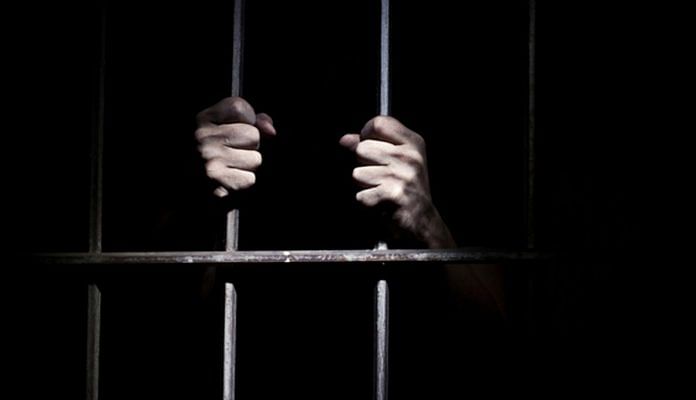Mumbai: The Supreme Court Tuesday acquitted six men, taking them off death row — an unprecedented judgment which overturned its own order of 2009.
The six men had been held guilty of killing five members of a family during a robbery and raping two women, including a 15-year-old girl who died.
On Tuesday, however, the apex court pointed to flaws in the prosecution’s case and ordered the immediate release of the accused.
For the six men, all poor labourers from nomadic tribes, the path to an acquittal has been a 15-year-long journey involving four different investigating officers, convictions at all three levels of the judiciary and 10 years of death row.
ThePrint traces the case that has led to an unprecedented judgment.
Five murders and a rape
The incident dates back to 5 June 2003, to an incident at Belatgavhan Shivar in Maharashtra’s Nashik district.
The prosecution had stated that Trambak Satote and his family of five, along with his sister-in-law’s son Bharat More, were chatting after dinner when at around 10.30 pm, seven or eight unknown people entered their hut, demanding money and ornaments.
They allegedly snatched the mangalsutra that Satote’s wife, Vimalabai, was wearing, jewellery from their daughter and son and Rs 3,000 in cash.
They allegedly re-entered the hut after a while, having consumed liquor, with weapons such as a knife, axe, sickle and a spade. They assaulted the family members till Satote and his three sons — Manoj, Sandeep and Shrikant — as well as More fell unconscious.
Three of the dacoits allegedly dragged Satote’s daughter to the guava orchard nearby and brought her back naked and with injuries on her body. Two others allegedly dragged Vimalabai to the well, assaulted her and then brought her back.
The incident left five members of the family dead but Vimalabai and Manoj survived and later became the main prosecution witnesses on whose testimonies the case rested. According to the prosecution, the investigating officer collected medical evidence, clothes of the five dead victims as well as some weapons from the spot.
Also read: SC acquits 6 men of murder & rape charges, 9 years after it upheld their death sentence
The investigation
At the time of the incident, there was also ample political pressure on the police to crack the case. According to a Press Trust of India report, the then opposition Shiv Sena-Bharatiya Janata Party (BJP) called for a bandh in Nashik, while Chhagan Bhujbal, then deputy CM, visited the area where the family was murdered and announced a financial aid of Rs 1.75 lakh to the next of kin.
Records with the Bombay High Court reveal that the Nashik police were under tremendous pressure to solve the case and sought help from the official machinery of all neighbouring districts such as Aurangabad, Ahmednagar, Jalgaon and Dhule.
The state’s crime branch arrested the first two accused, Ankush Maruti Shinde and Rajya Appa Shinde, on 23 June 2003. The custody of the other three accused — Ambadas Shinde, Raju Shinde, Bapu Shinde — who were involved in a separate case at Bhokardan in Jalna district, was transferred to the crime branch on 27 June 2003.
Their identification parade was held on 25 July 2003, in which Manoj identified all five while Vimalabai could not identify the second accused. The police arrested the sixth accused, Suresh Shinde, only on 7 October 2004, who both Manoj and Vimalabai identified two days later.
The prosecution eventually relied on 25 witnesses, including Manoj and Vimalabai, as well as four doctors and brought 20 documents, including spot panchnamas, post-mortem reports of the deceased, death certificates and opinion of medical officers, as evidence on record.
‘Mistaken identity’
At all stages of the trial, the defence emphasised that Vimalabai initially identified four other accused from a file that was shown to her on 7 June 2003. This identification was closest to the date of the incident as against the identification parade, which was held 50 days after the incident.
Arguing for the accused in the Bombay High Court, defence counsel A.P. Mundargi said, “The prosecution failed to explain as to how the present accused were implicated when PW (prosecution witness) 8, who is claimed to be a star eye witness, had already identified four other persons as the accused. It was never the case of the prosecution that in all 7+4 = 11 dacoits had entered the house of the complainant and committed the offences.”
In the apex court Tuesday, the defence pointed out that Vimalabai’s statements to the police and to the court differed, arguing that it made her an unreliable witness. It also questioned the delay in holding the identification parade and pointed to a lack of forensic evidence.
“It is submitted that as such, it can be said to be a mistaken identity,” defence counsel Yug Mohit Choudhary said in the apex court.
The trial
A sessions court sentenced all six to capital punishment on 12 June 2006, subject to the confirmation of the Bombay High Court, saying the accused committed “brutal murder and their acts were inhuman” while calling it one of the rarest of the rare cases.
On 22 March 2007, the Bombay High Court upheld the death sentences of three accused and commuted the sentences of three others to life imprisonment. On 30 April 2009, the Supreme Court upheld death punishment to three accused and enhanced the punishment of the three others to death.
Nine years later, on 31 October 2018, a three-judge bench of the apex court allowed appeals by some of the accused seeking a review petition, recalled its 2009 judgment in entirety and brought the appeals for a fresh hearing.
On Tuesday, 15 years after their arrest, the apex court paved the way for the six accused to walk free in the case.
Also read: In SC today, review plea of court’s own Rafale verdict saying jet deal doesn’t need scrutiny






